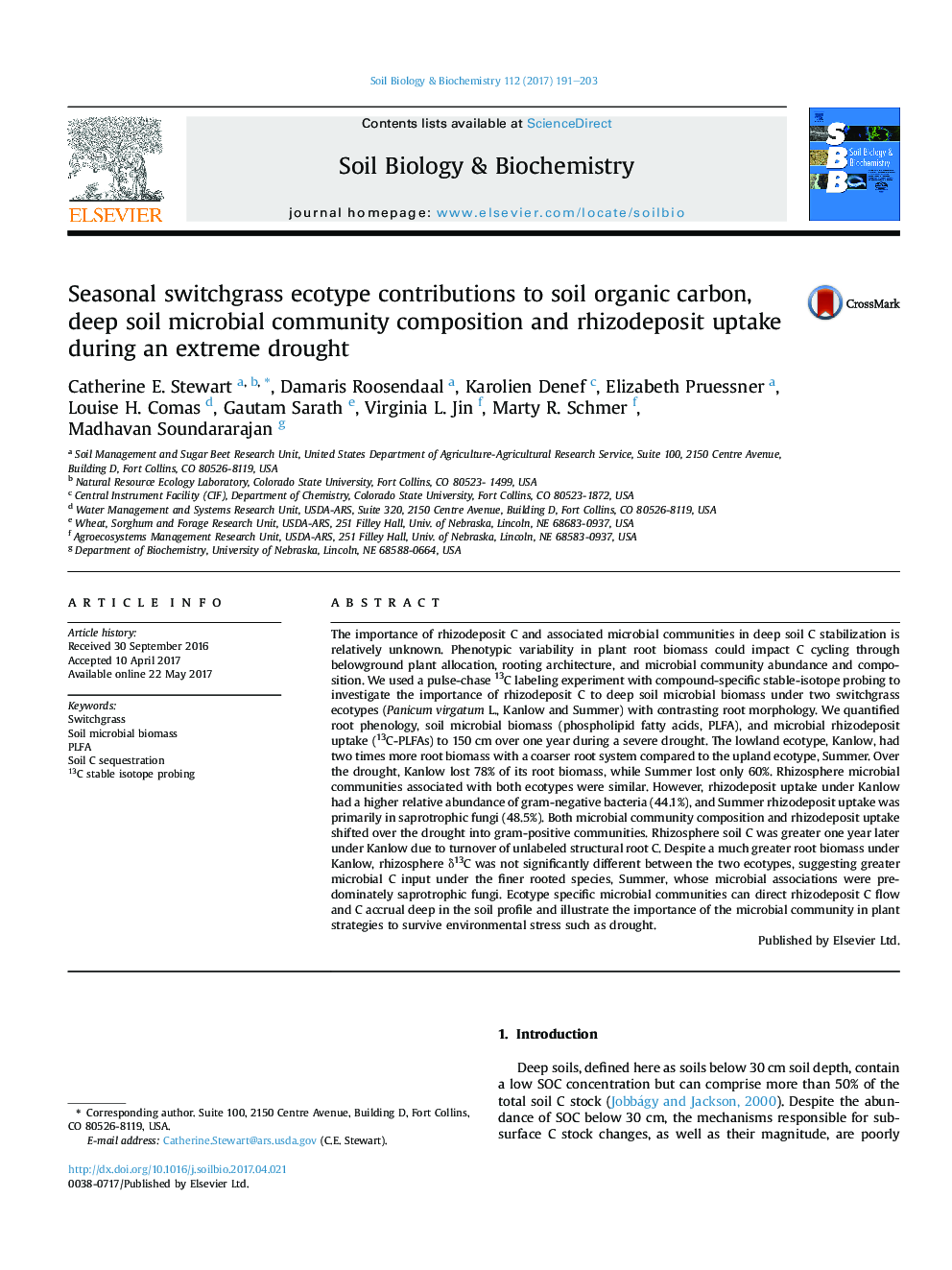| کد مقاله | کد نشریه | سال انتشار | مقاله انگلیسی | نسخه تمام متن |
|---|---|---|---|---|
| 5516349 | 1542572 | 2017 | 13 صفحه PDF | دانلود رایگان |
• Two switchgrass ecotypes lost more than 60% of root biomass due to extreme drought.
• Rhizodeposit C uptake in active microbial communities was different between ecotypes.
• During drought the gram-positive bacteria became more 13C enriched.
• Root death increased rhizosphere soil C and N at different depths between ecotypes.
• Ecotype rhizosphere soil 13C was not different implying equal belowground C transfer.
The importance of rhizodeposit C and associated microbial communities in deep soil C stabilization is relatively unknown. Phenotypic variability in plant root biomass could impact C cycling through belowground plant allocation, rooting architecture, and microbial community abundance and composition. We used a pulse-chase 13C labeling experiment with compound-specific stable-isotope probing to investigate the importance of rhizodeposit C to deep soil microbial biomass under two switchgrass ecotypes (Panicum virgatum L., Kanlow and Summer) with contrasting root morphology. We quantified root phenology, soil microbial biomass (phospholipid fatty acids, PLFA), and microbial rhizodeposit uptake (13C-PLFAs) to 150 cm over one year during a severe drought. The lowland ecotype, Kanlow, had two times more root biomass with a coarser root system compared to the upland ecotype, Summer. Over the drought, Kanlow lost 78% of its root biomass, while Summer lost only 60%. Rhizosphere microbial communities associated with both ecotypes were similar. However, rhizodeposit uptake under Kanlow had a higher relative abundance of gram-negative bacteria (44.1%), and Summer rhizodeposit uptake was primarily in saprotrophic fungi (48.5%). Both microbial community composition and rhizodeposit uptake shifted over the drought into gram-positive communities. Rhizosphere soil C was greater one year later under Kanlow due to turnover of unlabeled structural root C. Despite a much greater root biomass under Kanlow, rhizosphere δ13C was not significantly different between the two ecotypes, suggesting greater microbial C input under the finer rooted species, Summer, whose microbial associations were predominately saprotrophic fungi. Ecotype specific microbial communities can direct rhizodeposit C flow and C accrual deep in the soil profile and illustrate the importance of the microbial community in plant strategies to survive environmental stress such as drought.
Journal: Soil Biology and Biochemistry - Volume 112, September 2017, Pages 191–203
